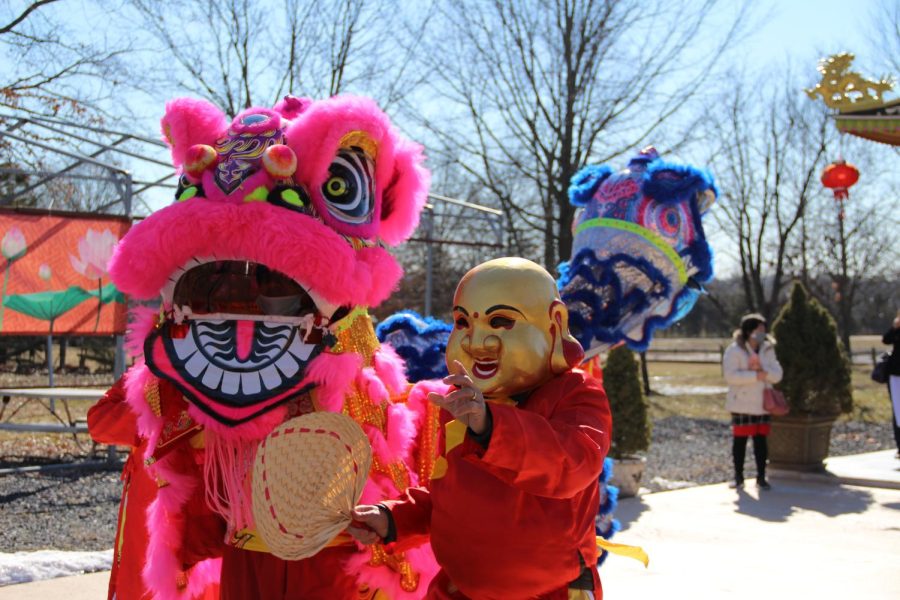Lunar New Year celebrations hit EHS
Feb 24, 2022
This previously ran in our February 2022 print issue.
February is a significant month for Asian culture, and with the world returning back to somewhat of normality, the Lunar New Year festivities have once again kicked off — this year stronger than ever.
For many in the U.S., the new year starts on January 1st. This follows the traditional Gregorian calendar, which bases the start of a new year on the Earth’s rotation around the sun. In contrast, many Asian countries, from Mongolia to Singapore, follow a lunar calendar, which bases the beginning of a new year on 12 full moon cycles.
This year, the 12th full moon cycle finished on Feb. 1, officially marking the beginning of a new year and launching a whole week filled with festivities, tradition, and great food.
Each year in the 12-year cycle has a designated animal, including the dragon, rabbit, snake and more, with 2022 landing in the year of the tiger. Each has its own unique traits and personalities, and similarly to astrology signs, people who are born that year are thought to share the same traits as their zodiac animal.
One of the most important aspects when it comes to the Lunar New Year celebration is the presence of family.
For Junior Emily Nguyen, nothing is more important than being surrounded by your loved ones when celebrating such a significant holiday.
“I do think it’s [the Lunar New Year celebration] really important, at least for my family,” Nguyen said. “It brings us all together as a whole… and it’s not only just our family, but our other families out there… everybody coming together to celebrate this whole new year.”
In an ideal world, everybody would get to celebrate with all of their loved ones, but that will not always be the case. There are people who reside far away from the majority of their family members, making it difficult, but not impossible, to celebrate.
Junior Mandy Zhang, whose family does not reside in America, still calls her relatives during the celebration on WeChat. Respect is a value held in high regard in Asian culture, and wishing loved ones good luck and fortune for the new year is a way to pay that respect.
During this special time, most Asian businesses close down for an entire week and employees take time off to go home to their loved ones and reconnect with their roots. It is regarded as common courtesy to honor one’s family, both past and present, in a series of prayers, sacrifices, and a sacred family dinner. Soft and chewy dumplings, sweet and salty moon cakes, buttery duck, and juicy roast pork are often found on the table.
Zhang’s family takes part in the feast, making some of the dishes on their own, then relaxing and sharing them together.
“On the day of Lunar New Year or the day before, we can just make dumplings, and then we can just eat them as a family,” Zhang said.
However, traditional celebration foods differ between families and countries. For freshman Colby Zheng, his family celebrates with something different, choosing to enjoy hotpot together rather than a large spread of dishes.
“We usually have big, fancy dinners. Sometimes we eat this fancy dish called hotpot,” Zheng said. “You have a boiling soup and you insert raw ingredients and it cooks. [Then] you take it out and pair it with a sauce, and then you eat it… There’s also certain rice, like sweet rice or whatever; other than that you can eat fish.”
A huge part of these family dinners and a well-known tradition that is practiced on Lunar New Year is the exchanging of red packets.
“We also give out these things called hongbao or red packets,” Zheng said. “They contain money [and] they’re given to you, like adults to children, as a way of saying good luck for the new year and to benefit them.”
Along with red packets, there are a myriad of other important traditions that are upheld. For over 3,000 years, tradition has been the most significant aspect when it comes to celebrating Lunar New Year.
“There are so many traditions to Lunar New Year…there are certain foods you eat on a certain day, plus you wear red and blow firecrackers and that kind of stuff; that’s very important,” Zheng said. “There are certain words, like the Chinese word for luck, or Fu, where you hang up on your door.”
One of the most common practices is the usage of the color red on decorations and clothing. Legend states that on every Lunar New Year’s Eve, there is a mythical beast called a Nian that rises from the earth to eat both people and livestock. The color red was thought to have warded off the beast and negative spirits, and has become a vital part of the Lunar New Year celebration, symbolizing good luck, fortune, and prosperity, just like red packets.
A long-standing custom during the Lunar New Year festivities is to light fireworks and in addition to the color red, loud noises and bright lights were thought to scare away the Nian.
Of course, everybody has different ways of celebrating the beginning of the celebration. Some skip the show and stay at home with their families and enjoy good food and music, while others venture out to their annual place of gathering.
“I go to a Vietnamese church in the Vietnamese Christian community, and on New Year, we go to the basement there and they perform with the dragon and things like that. And then they give everyone [a] one-dollar envelope just to get in the spirit,” Nguyen said.
Dragon dancing is arguably the most famous of the festivities. Dedicated groups of dragon dancers have huge rehearsals, and on the day of the celebration, there are upwards of seven dragon dancing teams that perform all day long. Like the color red and fireworks, dragon dances are performed to ward off evil spirits while simultaneously spreading good luck and fortune to all who witness the dance.
Lunar New Year is filled with traditions that have been practiced for centuries and is a time when Asian families can come together in an important family reunion, past traditions and renewing family bonds. More than just traditions, though, Lunar New Year is also a time to enjoy delicious food at a sentimental family dinner and, most importantly, spread positivity and happiness.
Additional reporting by Ayaan Shah.













